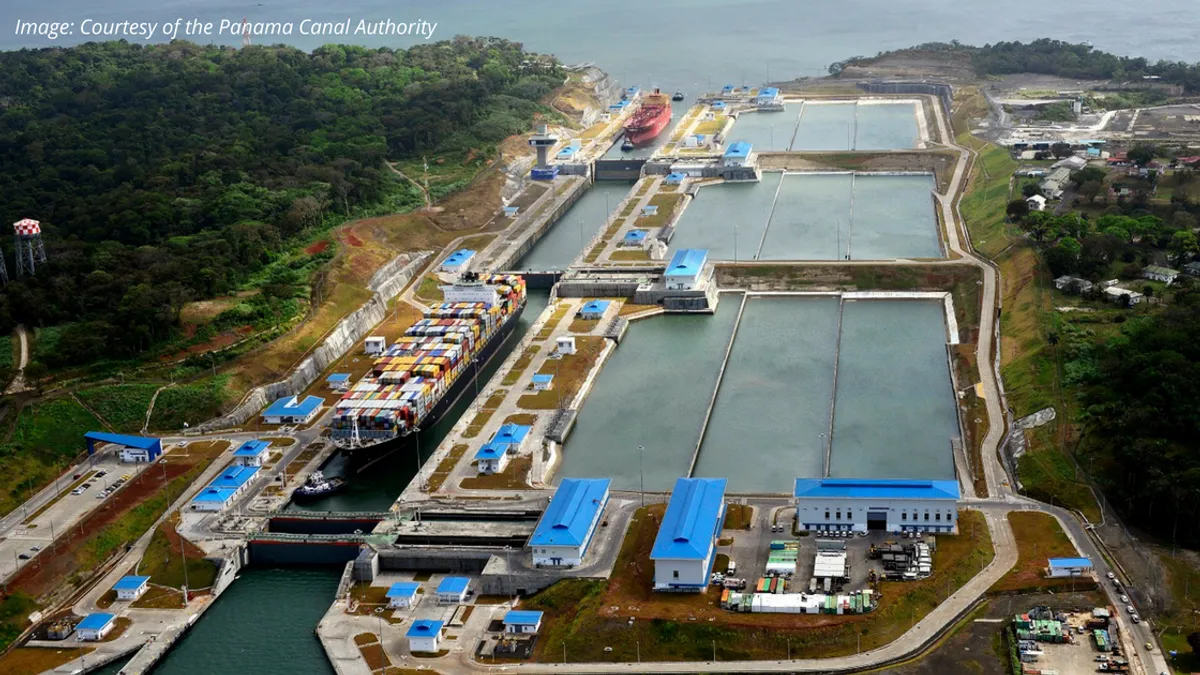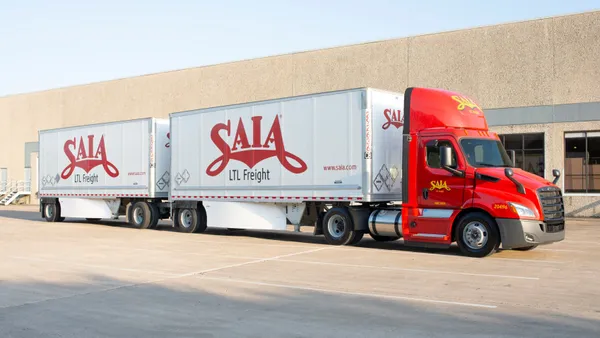Dive Brief:
- The Panama Canal will be employing a new platform by Quintiq, a Dassault Systèmes brand, to better manage vessel scheduling and maritime resources, the Panama Canal Authority announced Wednesday.
- The new system will help managed increased traffic to North American ports by reducing vessel waiting times, increasing daily slot availability and enhancing route reliability, according to the release.
- The partners expects the system's vessel scheduling technology to be fully operational by September 2017, although full integration will take place over the next two years. In addition to scheduling, the technology provider aims to help the Panama Canal reduce operational risk while through greater data.
Dive Insight:
The Panama Canal expansion has sent waves of expectations through the supply chain, as ports, carriers and Pacific Rim manufacturers explore the possibility of shipping directly to the U.S. East Coast from Asia.
While the canal always made this possible, shippers would often opt to unload at West Coast ports in order to take advantage of larger vessels, whose increased capacity and often allowed for better rates. Now, with the Panama Canal's extra lane for traffic, new set of locks and doubled cargo capacity, every link in the chain has been investing to take advantage of greater expected traffic. The Panama Canal's recent announcement reveals its own role is not over yet, either.
After all, port congestion is a serious issue along the supply chain — an issue the Panama Canal is looking to avoid altogether. Quintiq Director Camilo Gavrila tells Supply Chain Dive the decision to upgrade its planning software “signals a shift in the mindset of the maritime logistics industry toward the use of advanced information technologies to increase operational efficiencies."
The transit hub is not alone in this drive to increase efficiency through scheduling platforms. In fact, U.S. ports have long sought such technology.
Programs like Pier Pass at the Ports of Los Angeles-Long Beach help manage truck pickups during night hours, while a terminal within Port of New York and New Jersey recently announced it would establish similar scheduling services for daytime hours. As regards maritime transport, the Ports of Los Angeles-Long Beach also recently partnered with GE Transportation to track inbound vessels up to two weeks in advance in order to better manage traffic, and the Federal Maritime Commission has called for similar transparency portals at ports nationwide.














